This coming Tuesday nearly 100 women will be on the ballot in congressional primaries. They will continue the trend we’ve been seeing all year: an unprecedented number of women are running for office, a fact that has led journalists to dub the 2018 midterms as the “pink wave.” Here at The Primaries Project we’ve been tracking the campaigns of everyone running for Congress this year in both parties. We can confirm that the pink wave is real, and it’s big. Women make up 23 percent of nonincumbents running for congressional seats in 2018 compared to 16 percent in the previous two cycles. In addition, nearly 80 percent of those women have been Democrats.
Many women candidates are also winning their primaries. Among all women nonincumbent candidates who have run so far, 47.55 percent have either won their race outright or advanced to a runoff. Only 23 percent of male candidates have kept up, as the table below indicates. Female candidates are performing relatively better than their male counterparts, in part due to the overwhelming number of male candidates running for office.
| Table 1: Wins and Losses by Gender | |||
|---|---|---|---|
| Winner | Adv. To Runoff | Loser | |
| Female Candidates | 51 (35.66%) |
17 (11.89%) |
75 (52.45%) |
| Male Candidates | 90 (19.03%) |
21 (4.44%) |
362 (76.53%) |
Among House nonincumbent candidates in primaries held from March 2018 to present. Row percentages may not add to 100% due to rounding.
Win/loss rates aren’t the only difference between the female and male candidates. Since 2014, we have coded congressional candidate websites to learn more about the issues they are discussing on the campaign trail. The following table identifies the top five issues discussed by congressional candidates in the primary elections held so far. While male and female candidates are largely positioning themselves on the same political issues, male candidates appear to talk about tax policy more often than female candidates. Female candidates, however, are more likely to campaign on PreK-12 education policy. This difference is largely related to the fact that a heavy majority of female candidates are running in Democratic primaries, while slightly more than half of the male candidates are running in GOP primaries. Nevertheless, these are all issues that have salience across the partisan divide.
| Table 2: Top 5 Issues Mentioned by Gender | |||
|---|---|---|---|
| Male Candidates | Female Candidates | ||
| Healthcare/Affordable Care Act (78.0%) |
Healthcare/Affordable Care Act (80.5%) |
||
| Taxes (72.7%) |
Gun Rights/Gun Control (68.1%) |
||
| Immigration (68.2%) |
PreK-12 Education (66.2%) |
||
| Gun Rights/Gun Control (65.4%) |
Abortion (65.0%) |
||
| Abortion (60.4%) |
Immigration (63.7%) |
||
Among all 2018 primary candidates running in primaries from March 2018 to present.
Further, we also found that male and female primary candidates this cycle mention a number of other issues at different rates. In the chart below, we display the ten issues coded in our dataset where there is a statistically significant difference of issue mentions by candidate gender. It’s clear that the women candidates are focused on domestic issues, while the men are focused on international and business issues. Writing over a decade ago, the political scientists Jennifer L. Lawless and Richard L. Fox found that Democratic “policy preferences and priorities consistent with the Democratic party may shed light on why the majority of women officeholders are Democrats.”[i] In this regard little seems to have changed. The women candidates so far are mostly Democrats and their policy concerns are the policy concerns of Democrats and not Republicans.
If enough of these women get elected in 2018 to tip control of the House to the Democrats, we could see significant changes to the congressional agenda. And through them the U.S. Congress would take one more step away from its all-male past. In a story that is nearly incomprehensible today, forty-six years ago freshman Congresswoman Pat Schroeder (D-CO) was invited to be on the House Armed Services Committee, along with Congressman Ron Dellums (D-CA), an African-American. The committee chairman, a 72-year-old Democrat named F. Edward Hebert (D-LA), was so opposed to having a woman and an African-American on the committee that he added only one seat to the committee room and made Schroder and Dellums share it![ii]
While there are still many Heberts among us it’s unlikely that they can stop “herstory,” should it come to pass.
[i] It Takes a Candidate: Why Women Don’t Run for Office, Cambridge University Press, 2005, page 82.
[ii] Eleanor Clift and Tom Brazaitis, Madam President, Women Blazing the Leadership Trail, Routledge, 2003, p. 251.
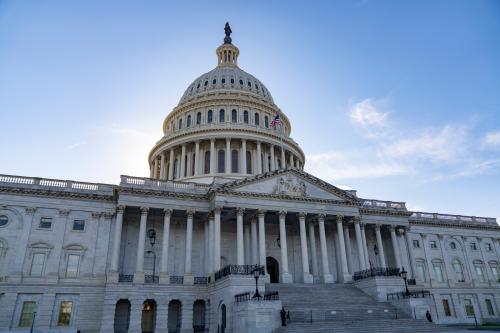
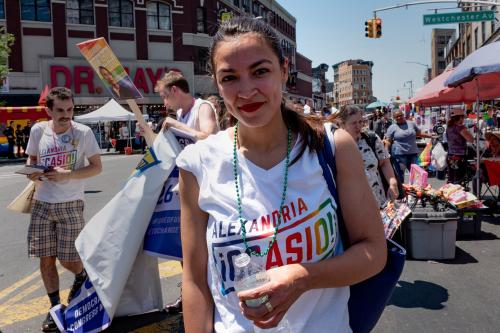
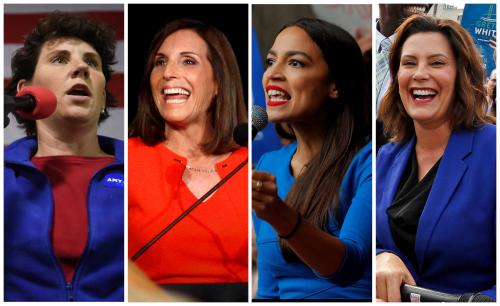
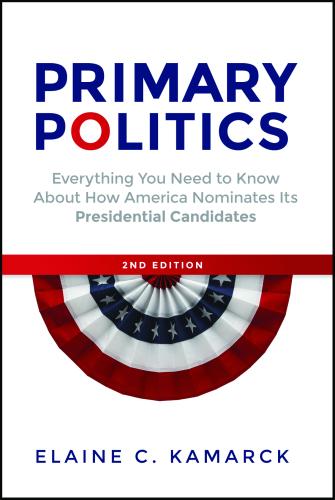



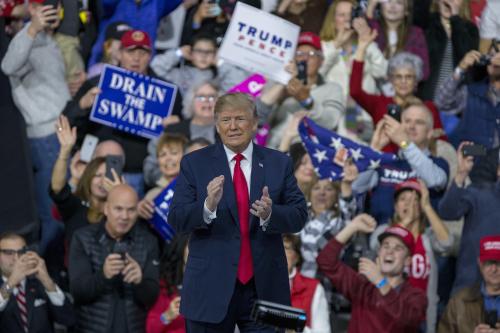

Commentary
The pink wave makes herstory: Women candidates in the 2018 midterm elections
June 1, 2018